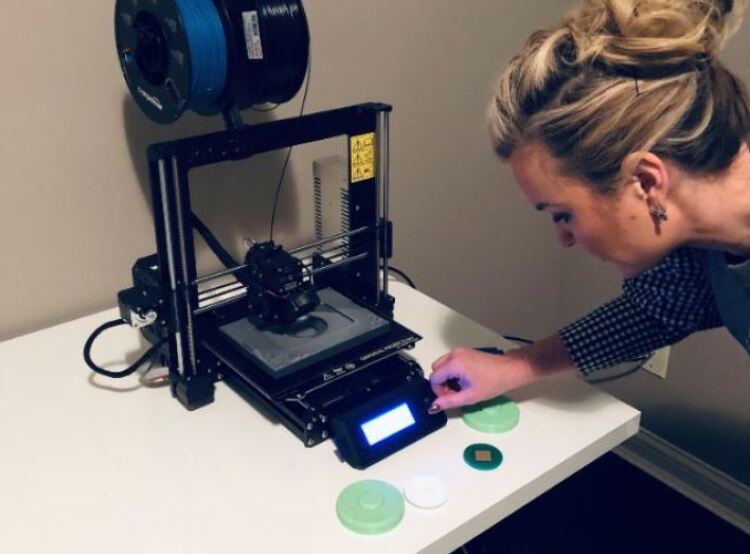Because it’s not just about developing a new gizmo or gadget. It’s about creating new models of care, safety practices, more efficient processes — and even innovations that tackle social challenges to improve patient outcomes.















- INTRO
What Makes Nurses Innovators?
There are over 4 million nurses in the US, and over 20 million nurses in the world, which means there’s the potential for over 20 million nurse innovators. Many of those nurses are at the bedside every day, understanding patient concerns, patient care challenges, and identifying the gaps. But why are nurses so primed for innovation?
Maybe it’s because they’re critical thinkers who when presented with a problem get creative with solutions and look at the problem from multiple angles. Or maybe it’s their tenacity and care. They’re constantly assessing situations and trying every approach, even non-pharmacological ones.
To weigh in, here are a few of those nurses on what makes every nurse an innovator at their core.
- 01
- 02
- 03
- 04

Healthcare is challenged by complexity and ambiguity. Nurses bring a collective, connective and collaborative point of view that has the capacity to bring intentionality to product, policy, and process.

Nurses are natural innovators because we have the ability to empathize with a problem more than most. Seeing a problem that directly affects a patient tugs at our heartstrings, and we want to solve it for the betterment of patient care.

We, as nurses, have been told to think in a linear process — but thinking differently is a huge asset and attribute. You not only need the confidence to bring your ideas forward, you also need to be okay with failure. And you have to be okay with iteration and trying things multiple times.

As a nurse innovator, you are starting to think out of the box and how to incorporate the changes you want to see into real life practice. The advice I have for them is to persevere, don’t give up, and continue, because you will end up making a difference with your design and with your device.
Divergent Thinking
Divergent thinking, or thinking nonlinearly and exploring many possibilities instead of a single solution, is a cornerstone of innovation. And it encourages curiosity and creativity, both of which are essential for developing something truly novel.
Many healthcare settings and even a number of healthcare organizations prefer to do only what’s tried and true, until a near miss occurs. But this is where nurse innovators can shine. Nurses are already natural problem solvers after all. So by using divergent thinking as you ideate, you’ll also be able to anticipate problems instead of simply addressing them.
Risk-Taking
Divergent thinking can result in ideas that may feel risky to implement. Which is understandable, when you consider the healthcare industry as a whole. There, risk is often viewed as a negative term and risk-taking behavior is widely avoided. In fact, few nurses voluntarily visit the risk management office.
But that’s also why it’s important to develop a certain tolerance for taking risks. Risk is inherent to innovation you just need to mitigate it. Generally speaking, nurse innovators have a higher ability to manage it, because they’re solution-minded and take a bolder approach with experimentation, often introducing new solutions.
As you develop an idea, plan for the risks that may come up: Identify and document potential setbacks, so you can find an alternative solution when one is needed. And educate your peers on all possible outcomes as you encounter them.
Teamwork and Collaboration
Even the greatest nurse innovators never work in a silo. Because both nursing and innovating truly take a team. Bringing an idea to life — whether it addresses patient needs, the needs of their families, workflows, or how to make everyday practices more efficient — requires research, testing, and vetting. And these require different points of view, too.
While it’s easy to assume that healthcare innovation should be done by people like nurses physicians, pharmacists, and physical therapists, it should also include statisticians, engineers, software developers, and business leaders who have industry insights that healthcare staff are less familiar with. By diversifying who you work with, you can identify blind spots in your design thinking to help your ideas grow.
Business Strategy
There are medical skills, which include hands-on training, and there are entrepreneurial skills, made up of financial, operational, and strategic know-how. Both are equally important. Because when you learn the business of healthcare, you learn the skills you need to sit at the boardroom table.
The most effective nurse innovators have a sharp knowledge of healthcare trends and their implications for other healthcare workers, patients, and processes. They also understand the system at large, and can identify both opportunities and obstacles within how it works today. So as you develop your own solutions, think through a multi-step strategy that outlines the successes you hope to achieve and how they could inform trends in the future.
- Nursing Timeline
- Nursing TimelineSource: A Scrub's Life
- Nursing TimelineSource: Nurse.com



























